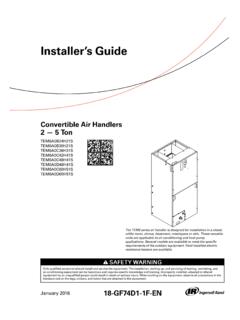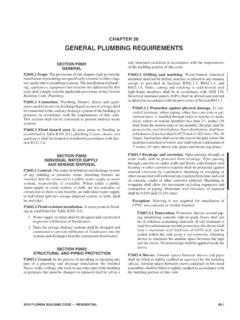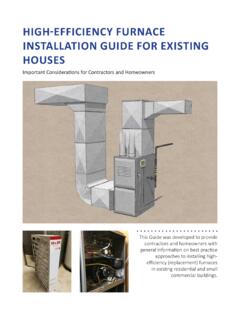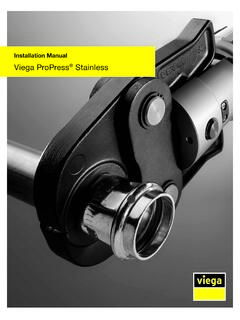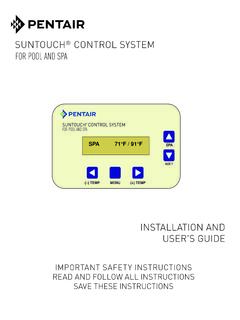Transcription of POND CONSTRUCTION AND MANAGEMENT Fish Pond
1 Zoo-08-GE POND CONSTRUCTION AND MANAGEMENT Fish Pond design and CONSTRUCTION A typical earthen fish pond should be 300m2. The main physical factors to consider are the land area, water supply and the soil water retention capacity. Land area The projected land for fish pond CONSTRUCTION should be relatively level. Steeply sloped land is not suitable for building ponds. A slope of about 1% is ideal. A farmer should determine an area large enough for the present plans any future expansion. Such an area should not be prone to flooding. The selected area should not be subject to pollution in runoff from adjacent land. If possible, the land must be slightly lower than the water source, so that the ponds can be filled by gravity rather than by pumping.
2 Water supply The most common sources of water used for aquaculture are surface waters (streams, springs, lakes) and groundwater (wells, aquifers). Wells and springs are generally preferred for their consistently high quality water. The quantity and quality of water should be adequate to support production. A good water source will be relatively free of silt, aquatic insects, potential predators, and toxic substances, and it will have high concentration of dissolved oxygen. Warm water species like tilapia can tolerate water with lower dissolved oxygen levels, so tilapia culture is often done in static water, that is, without water flowing through the ponds. For earthen ponds, the water source should be able to provide at least 1 m3 of water (1000 liters) per minute for each hectare of ponds that will be built.
3 If the selected site has relatively poor soils ( , soils containing too much sand) the source should be able to provide two to three times more water (2-3 m3 per minute per hectare). Soil Land should be comprised of good quality soil, with little or no gravel or rocks either on the surface or mixed in. Farmers should consider importing clay soil for compacting in the fish bottom, sides and core trench to minimize seepage. Soil that will be used to build the dykes must contain at least 20% clay so the finished pond will hold water throughout the growing period. Zoo-08-GE Some soil with higher clay content preferably between 30 and 40% should be available nearby. It will be used to pack the core trenches in the dykes.
4 In absence of good soils, farmers should consider using dam liners or concrete during fish ponds CONSTRUCTION . Pond design and layout General considerations Depends on the type of soil present and the intended culture practices. The water source must be able to keep the pond full throughout the culture period. Relatively shallow ponds are productive, but the shallow end should be at least m deep to avoid invasion by weeds. It is always desirable to place screens on pond inlets and outlets to keep out predators, insects, and unwanted fish, and to retain the cultured fish. Every pond should be drainable. Every pond should have an independent controlled inlet and outlet. Excavation of a core trench should be done where soils are less suitable.
5 Perimeter and feeder roads are required to provide for movement of machines during CONSTRUCTION and at harvest. If you plan to drive on the dykes, build them at least 3 meters wide on top, and wider at the base. Soil used to build dykes should always be compacted in layers. 15 Specific design considerations 1. Water sources used for fishponds Water sources can be spring water, seepage water, rainwater or run-off, tidewater (marine ponds), water from bore holes (wells),or water pumped or diverted from a river, lake, or reservoir. Quantity of water needed Make a decision on the type of fish to be cultured and the size of ponds, so as to determine the amount of water required. Consider the climatic condition of the area, rainfall pattern, and nature of the soil when Zoo-08-GE calculating quantity of water.
6 A general rule is that pond water inflow and outflow should equal the pond volume over the period of a month. If inflow is too low, water quality may suffer from oxygen depletion and/or the accumulation of toxicants. However, if the inflow is too high, large amounts of beneficial algae may be flushed from the pond. As a rule of thumb, ponds should fill up in less than a week. For small ponds, , ponds smaller than 200 m2, 1-inch pipe is recommended. A 400-m2 pond needs a 2-inch pipe , while a pond larger than 4000 m2 will require a 4-inch pipe (see Table ). Estimate the amount of water available from a specific source, Steps 1. Survey the land 2. Clear all vegetation from the site 3. Remove the topsoil from the site 4.
7 Determine pond, drain pipe , and supply canal elevations 5. Peg out the pond, including core trenches, dyke tops, and dyke toes 6. Dig core trenches and pack them with good soil 7. Excavate the pond area 8. Build the dykes 9. Install the drainage system 10. Install the water supply system Building your pond 1. Surveying the land Clear the land to get line of sight. Select a reference point for the survey. The standard reference point ( bench mark ) is sea level (0 m above sea level). However, in pond CONSTRUCTION we use a Temporary Bench Mark (TBM) to help determine elevations and establish slopes. If there is an existing pond use it as the reference point to get the heights of your dykes. If there are no existing ponds, use a fixed point on an inlet or outlet canal as the TBM.
8 Start measuring elevations from the supply canal using a level and twine. Determine slope from dyke top to pond bottom for both Vertical and horizontal dimensions. This helps in understanding how water will flow from the pond to the drain or back to the river. Zoo-08-GE Raise elevation into canals by blocking with timber or sand bags. Survey across water bodies using objects such as bamboo, pipes, etc. 2. Clearing vegetation Vegetation should not be included in the soil used to construct the pond dykes, so should be removed from the site prior to beginning to excavate and move soil. 3. Removing topsoil from the site Topsoil is not good material to use for dyke CONSTRUCTION , so it should be removed prior to excavating the pond.
9 Topsoil can be set aside and spread over the dykes after CONSTRUCTION is complete, or it can be moved for use elsewhere on your farm. 4. Determining pond, drain pipe , and supply canal elevations Determine topography (layout) of the land first. 2 Remember that the elevations of the pond inlet and the outlet to the drain canal determine the elevation at which the pond drain can be placed. Hence the difference in the elevations of the inlet and the outlet determines how deep your pond can be. Remember to allow for the freeboard. Canal slopes generally range from to 1%. Cross check your levels to correspond with the TBM so as not to lose dyke height. You can also check your pond diagonally, widthwise, and lengthwise. 5.
10 Pegging out the dykes and core trenches Decide on the size of the pond and peg the pond area. Decide on the dyke slope and width. Place pegs at the inner toes, including the four bottom corners. The toe is the point where the dyke slope meets the pond bottom. To do this, multiply the desired slope of the dyke by the desired pond depth. For example, at the deep end, the inner toes will be 80 cm x 2 = 160 cm, while at the shallow end the inner toes will be pegged at 75 cm x 2 = 150 cm. 6. Constructing cores If you suspect the dyke or pond bottom soil to be highly permeable, dig a core trench under the dykes around the pond. Pack the core trenches with impermeable clay. Zoo-08-GE 7. Excavating the pond area Make a decision on pond depth and calculate the dig/fill heights Begin excavating the pond bottom.
